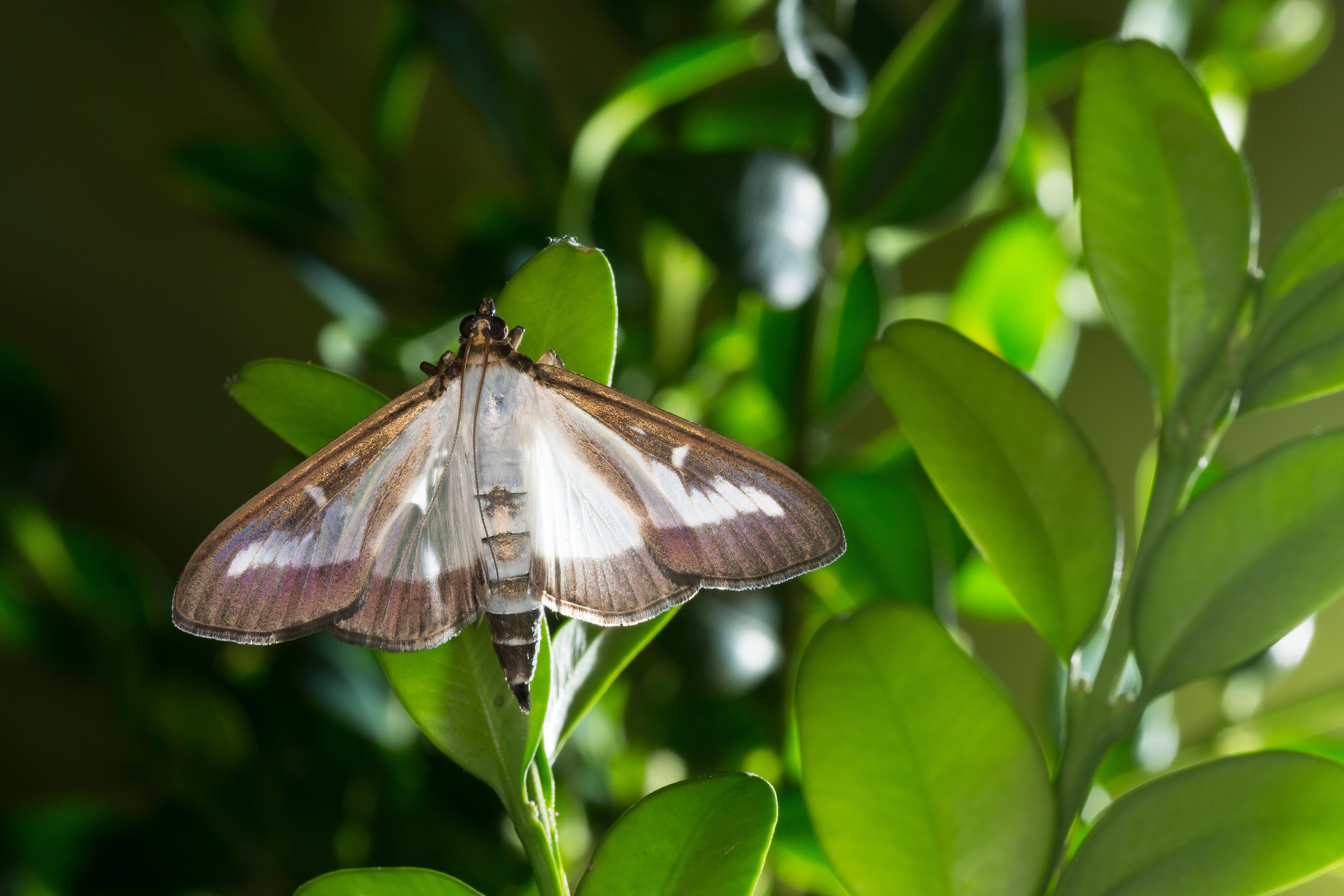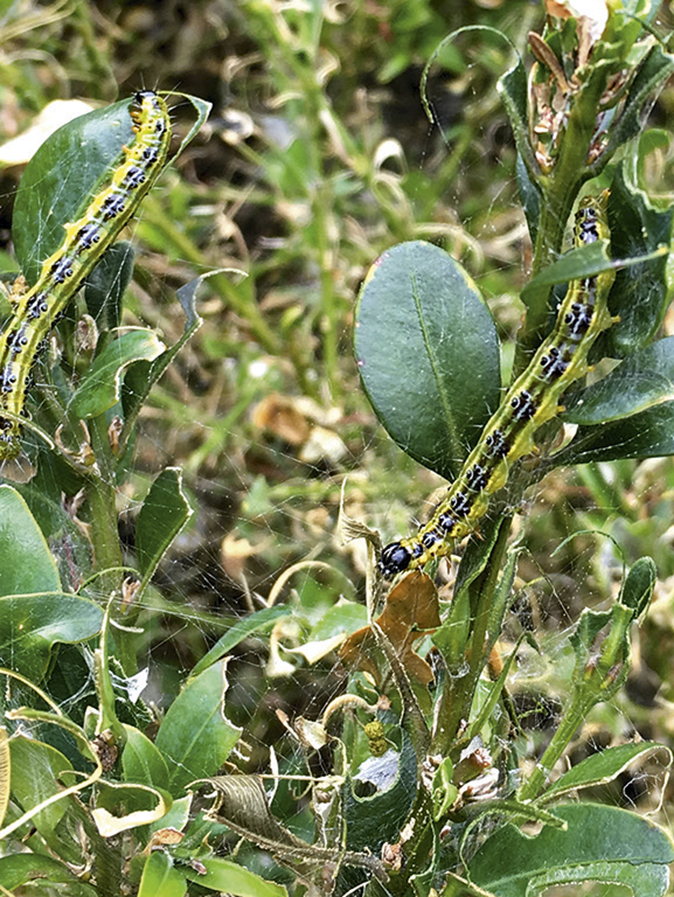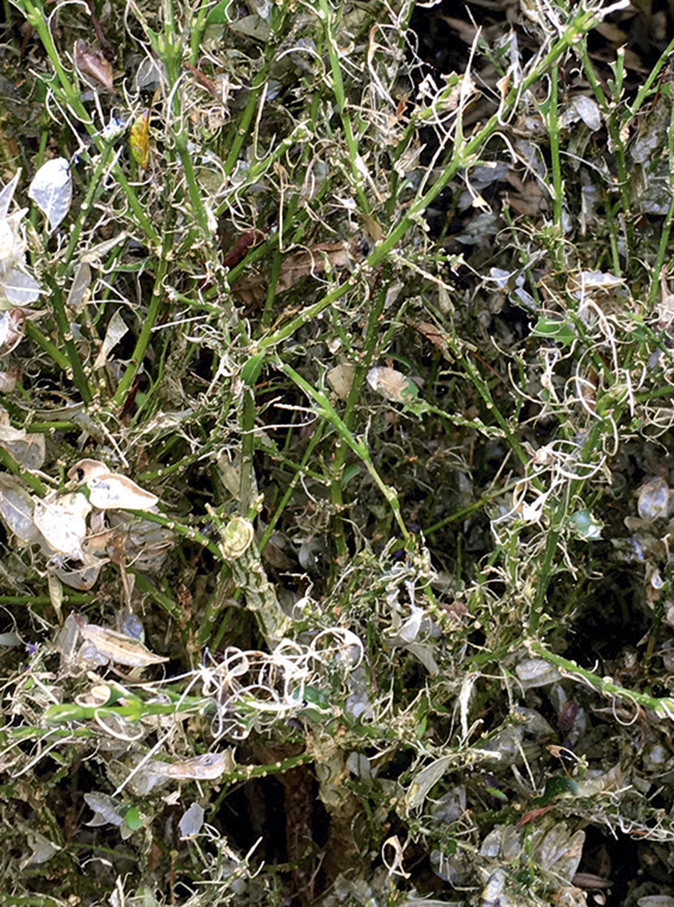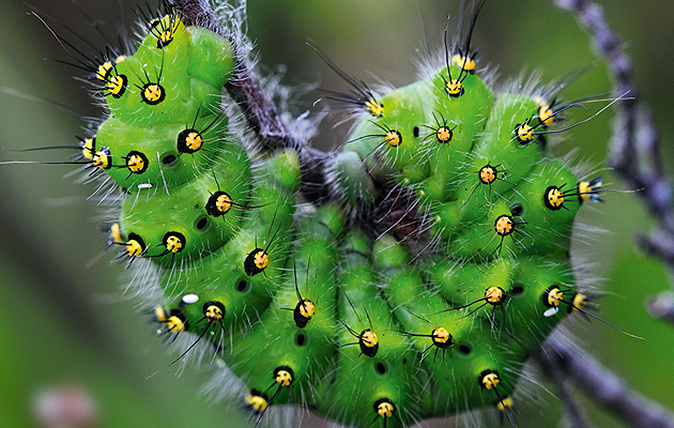How to get rid of box moth caterpillars
The box moth, Cydalima perspectalis, and box moth caterpillars can quickly destroy box hedges and other box plants. Here's how to combat these pests.


This is a tale of woe, but it has a happy ending and is, I think, helpful for anyone wanting to continue growing box plants in their garden in the future.
One of the things my friend Bill looks forward to most in spring is the emergent foliage on the many box plants in his garden. In April and May, box has a soft, bright freshness which seems to encompass the essence of the new growing season and is a particularly lovely backdrop to his tulips. Last spring was like any other, Bill recalls, with the new box growth firming and darkening as summer arrived.
Suddenly, in the space of what seemed no more than a week or two, the flowing rivers and shapes of box that are important presences throughout his garden appeared to be ailing. They looked puzzlingly faded and desiccated. Close inspection revealed stems being systematically shredded and defoliated by very hungry caterpillars; too many to count, he says.

The box moth, Cydalima perspectalis, is a recent alien import, whose natural home is East Asia. It’s spread across Europe in the past 10 years; its damage to British gardens was first reported in 2011, although adult moths had already been seen at large in 2008. I had heard about serious, localised eruptions of box-moth damage in the past few years, but hadn’t seen its full-on powers of destruction until it devastated Bill’s garden. It was as if a swarm of locusts had passed through.
In areas where the moth is active, garden centres have done brisk trade in the pesticide Bayer Provado Ultimate Bug Killer, but the evidence suggests it isn’t up to seeing off box moths.
Part of the trouble is that this moth has a clever way of hiding in concealed foliage, looped and tied with a webbing of silk that gives the offspring safe haven. The caterpillars themselves are leafy green and even the pupae are box-green and glue themselves to the branches, looking for all the world like box leaves, while they mature into yet more moths, which will lay hundreds more eggs.
Adult moths, pure white with a brown margin all around the wings, are skittish and hide on many different garden plants as well as in the box itself. Numerous generations will hatch and flourish across the season, so that chemical insecticide spraying is an expensive and ineffective method of control—as well as being potentially harmful to other creatures.
Exquisite houses, the beauty of Nature, and how to get the most from your life, straight to your inbox.
Bill needed help. My searches online indicated the only product that truly controls box moth is Bacillus thuringiensis var Kurstaki, a natural bacterium (not a chemical insecticide) often sold as DiPel or Lepinox. Organic farmers use it to stop butterfly caterpillars demolishing their brassicas.
Although it used to be available in small sachets for gardeners’ use many years ago, subsequent tighter restrictions mean that, recently, it’s only been available to farmers and landscape professionals, with a caveat that training in the use of spraying is required. (This is sensible because DiPel kills all moth and butterfly cater- pillars, not just the ‘baddies’, so extremely disciplined and focused use is required.)

As I’ve done the training and used DiPel in a small way many years ago, I acquired enough of the product online to deal with Bill’s problem. The results were rapidly apparent. Within three days, the caterpillars had gone; within a week, new, unharmed leaf growth was springing up on the treated plants, after just one application.
You need to continue respraying very thoroughly every 7–10 days, however, to deal with later hatchings and break the cycle, until cold weather arrives. Also, shake out and pick off debris on the plants (there’s lots of it) and sweep up under them, as pupae can overwinter.
Instead of grubbing up and burning thousands of pounds’ worth of box, Bill has found that his plants’ rapid willingness to regrow has saved his garden— and lifted his beleaguered spirits.
Box has been hit by various ailments in the past couple of decades, the most serious being box blight, Cylindrocladium buxicola. Numerous gardens that previously boasted fine parterres have been decimated by blight. Now there’s hope for this problem, too, via Topbuxus Health Mix (developed in Holland but easily available online and at some garden centres), which is proving to be helpful in eradicating blight diseases.
‘We dare to claim that we have the worldwide solution for Boxblight,’ declares the topbuxus.com website. It also has its own brand of DiPel: Topbuxus XenTari.
If you have treasured box plants that have been ailing, these days, there’s no need to dig out and burn.

A simple guide to identifying British moths
They might not be considered as beguiling and romantic as butterflies, but we should look at moths in a new

Common caterpillars: A simple guide
Are you able to tell your woolly bears from your elephant trunks?

The worst garden pests of all? The ones you invite in with open arms
A couple of weeks ago, Alan Titchmarsh wrote a lovely piece for Country Life about how to get children and
